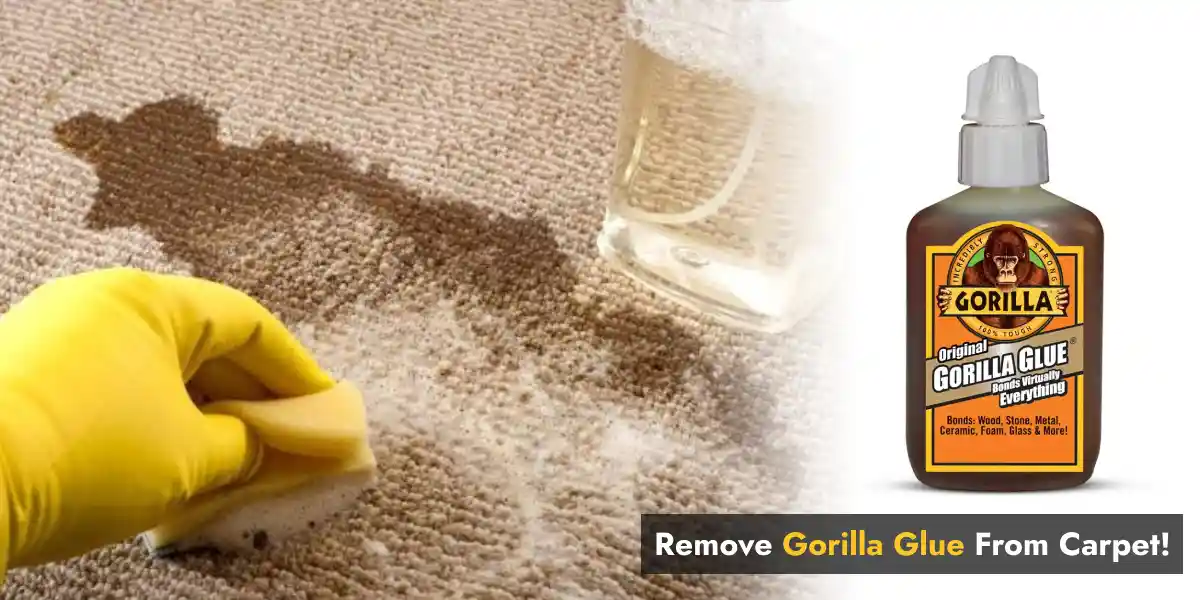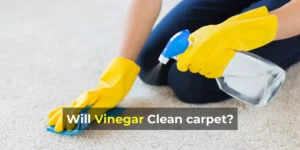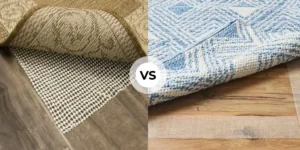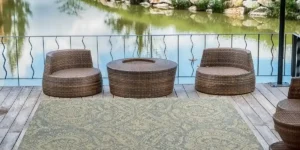Carpet is a popular choice for many homeowners. Because it is inexpensive and easy to clean and maintain.
But, have you ever found yourself in a sticky situation with Gorilla Glue on your carpet?
Well, if for some reason, some gorilla glue fell on your carpet. It can be very difficult to remove from the carpet.
Because Gorilla Glue is a famous all-purpose adhesive. It creates a strong bond on any surface. Plus, it is a non-toxic adhesive that is easy to use, making it a good choice for indoor and outdoor DIY projects.
The adhesive also has good heat and cold resistance and is waterproof. So, it is a tough adhesive that is difficult to remove from carpets. But still, this is not impossible to remove.
Now here a question arises: How to remove Gorilla Glue from carpet?
When Gorilla Glue lands on your carpet, act quickly by wiping it up with a damp cloth. Otherwise, the glue will dry into the carpet fibers, making removal more difficult.
With this comprehensive guide, you’ll find the best way to remove gorilla glue from the carpet. Whether it’s a recent accident or an old glue stain, this guide will help you. So, keep reading.
Gorilla Glue on the Carpet: What Are the Possible Consequences?
- Hardening: Gorilla Glue is known for its strong adhesive properties. When it dries, it hardens into a hard, solid substance. If it gets on your carpet, it can be tough and challenging to remove.
- Stain: Gorilla glue can stain carpet fibers. If your carpet is colored or made of a certain material, glue can leave an invisible mark that is hard to remove.
- Damage to Carpet Fibers: Its adhesive properties allow carpet fibers to stick together or match. If the glue is removed forcefully, the fibers can be damaged and frayed.
- Remaining Build-up: If Gorilla Glue is not properly removed from the carpet, it can leave a residue that attracts dirt and grime. Over time, this residue can build up, making carpet cleaning more challenging.
- Discoloration: Some types of Gorilla Glue may contain ingredients that discolored the carpet fibers. It may have an uneven or dull appearance in the affected area.
How to Remove Gorilla Glue from Carpet? (Natural-Ways)
#1 Apply Olive Oil
Olive oil can be a handy household ingredient when removing Gorilla glue from carpets. But it may take a little longer to release your tied adhesive. It will still work if nothing else can remove crazy glue from carpets.
Here are the steps you need to take to remove stubborn glue stains from carpet with olive oil:
Gather the Materials:
- clean cloth or sponge,
- a small amount of olive oil
- a plastic scraper an old credit card
- mild dishwashing detergent
- Apply Olive Oil: Take a clean cloth or sponge and dampen it with a small amount of olive oil. Using the cloth, dab the glue stain gently, ensuring that the glue is well-saturated with oil. Allow the olive oil to sit on the glue for 10-15 minutes to break down the adhesive.
- Scrape Off the Glue: Once the olive oil has worked its magic, peel away the softened Gorilla glue using a plastic scraper or an old credit card. Be gentle to avoid damaging carpet fibers.
- Clean the Area: When most of the Gorilla glue is removed, thoroughly clean the area. Create a soapy solution by mixing mild dishwashing detergent with warm water. Wipe away any remaining glue residue with a clean cloth dampened with soapy water.
#2 Apply Citrus Fruit
Start by scraping the affected area of the carpet with a scraper toothbrush. Then, cut the citrus fruit in half and squeeze the juice on the glue stain.
Make sure the citrus juice completely covers the glue. Let the citrus juice sit on the glue for a few minutes.
The acidic properties of the juice will break down the glue. After that, use a plastic scraper or an old credit card to lightly scrape off as much glue as possible.
But, be careful not to damage or pull the carpet fibers.
Once most of the glue has been removed, clean the area with a damp cloth and soapy water. Then, allow the area to dry completely.
See Also: How to Make Your Own Citrus Enzyme Cleaner?
#3 Apply Vinegar or Dish Soap
Combining vinegar and dish soap can be effective in removing carpet stains. Add two tablespoons of white vinegar and one tablespoon of dishwashing liquid to a cup of warm water. And mix them properly.
Use a putty knife to scrape the stain before applying vinegar and dish soap. After some minutes, apply the solution to a clean cloth and soak it on the carpet. Allow the solution to sit and dissolve the glue for about 15 minutes.
By doing so, it helps Gorilla glue’s adhesive properties break down. Repeat the process if your carpet doesn’t fade the stain with a soaked cloth.
#4 Using a Hot Iron or Heat Gun
Ironing is a popular method for removing dry glue. The heat from the iron softens glue from long and thick carpets.
Start by scraping off the gorilla glue. After that, place an old cloth over it, then turn the iron on and press over it. It will soften the glue and absorb it into your clothes.
Alternatively, you can also use a heat gun to remove Gorilla Glue from the carpet.
Apply the heat gun to the affected area. When the surface is heated, scrape off the adhesive using a knife.
Make sure you don’t overheat the carpet, which could damage it. You should be able to remove the Gorilla Glue without too much difficulty if you are careful.
Best Ways to Remove Gorilla Glue from Carpet
#5 Using Goo Gone
Take a clean towel or rag and wipe the affected area of the carpet with Goo Gone. Allow it to sit for 3-5 minutes, then wipe it off with a clean cloth to remove all the glue.
Then, using an old towel, wipe it down with hot, soapy water. Use a plastic scraper to remove any loose or excess Gorilla glue from the carpet.
But, before applying Goo Gone to the affected area test a small, inconspicuous area first. And make sure it doesn’t damage or discolor the carpet in any way.
Also See: Can You Use Goo Gone on Laminate Flooring? (Explained)
#6 Apply Acetone
Acetone loosens Gorilla Glue’s adhesive agents to make it easier to remove. Use a cotton swab or cotton ball to dab the acetone onto the affected area.
Then, leave the acetone on the Gorilla Glue for a few minutes. Gently scrub the area with a soft cloth or toothbrush to remove the glue.
Ventilation is essential when working with acetone due to its strong fumes.
It’s a good idea to test it on a small, hidden spot on the carpet before applying it directly to the Gorilla Glue stain. Scrap any loose or excess Gorilla glue from the carpet with a plastic scraper.
Also See: Will Acetone Damage Laminate Floor? (Explained)
#7 Using WD-40
A strong adhesive such as Gorilla Glue can be released using WD-40 as a solvent. The following steps will guide you in using WD-40 on the carpet and removing stains.
Using Steps:-
- If you plan to use WD-40, ensure your area is well-ventilated and test a small, hidden area first.
- Use a plastic scraper to remove excess Gorilla Glue from the carpet. Let the product soak in the glue residue for a few minutes after spraying it.
- Use a soft-bristled or old toothbrush to gently scrub the stained area after the WD-40 has worked.
- To remove leftover WD-40 residue, soak a warm cloth in warm water and gently blot the area. It will remove any oily residue left behind.
FAQs: Best Ways to Remove Gorilla Glue from Carpet
Can you use Gorilla glue on carpets?
Using Gorilla Glue on carpets is not recommended as it shrinks the carpet. It is better to use a carpet adhesive, which is specifically designed for the carpet.
Also, if you use Gorilla Glue on carpets, it can stain and damage fibers.
Plus, it can be difficult to remove from carpets and leave a sticky residue that attracts dirt and dust. It is always best to use the correct carpet adhesive to keep them looking new for longer.
How long does Gorilla glue take to dry on carpets?
Gorilla glue takes about 60 minutes to completely dry on carpets if it is closed and set correctly.
But, it’s important to remember that the drying time will depend on the carpet type and the glue used.
For best results, keeping the glued area undisturbed until it’s fully dry is recommended.
Does nail polish remove gorilla glue?
No, nail polish removers may not have enough acetone to dissolve Gorilla glue. The most effective way to remove it is to use a solvent such as acetone.
Yet, this should be done cautiously as it can damage the carpet. Or, a commercial glue remover can also be used.
How do you secure carpet edges?
You can use double-sided tape or a heat gun to secure the carpet edges to melt carpet fibers together. Start working under the carpet edge by placing a roll of carpet tape.
Then gently peel off the tape and press the carpet edge into the tape. Be sure to make sure the edges of the carpet are straight.
Another option is to use a special adhesive, which is designed to attach carpets to floors. Or, you can use staples or tacks to fasten the carpet to the floor.
Check Out More Articles on Carpets & Rugs:
- How to Clean Old Hardwood Floors After Removing Carpet? (5 Easy Steps)
- Are PVC Rug Pads Safe for Vinyl Flooring? (4 Common Concerns)
- Can You Put Vinyl Flooring Over the Carpet? (9 Easy Steps)
- The Pros and Cons of Using Rubber-Backed Rugs on Vinyl Plank Flooring





